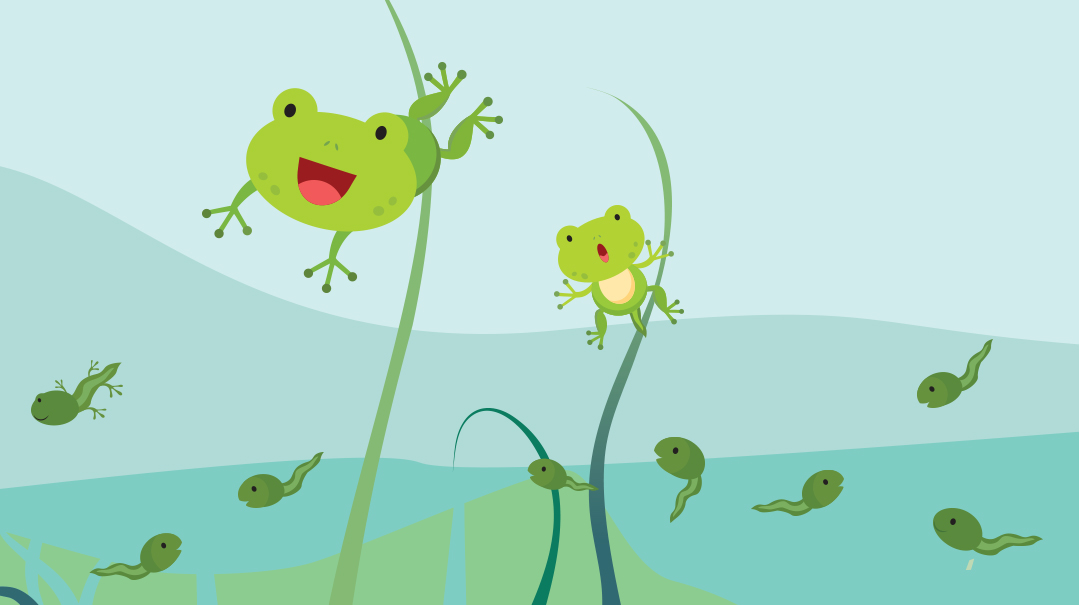Tadpoles Here, Tadpoles There

Tadpoles are in-between frogs: They are what frogs look like after they hatch from their eggs but before they turn into frogs

There was a pond at the end of my block where all the kids liked to catch tadpoles, frogs, and turtles. When we first moved in to this neighborhood, my mother didn’t let us go there. She was afraid we’d fall in, and my mother’s motto is safety first. And second and third.
Finally, this year we were old enough to ride our bikes to the pond with the other kids. I couldn’t wait. In winter, nothing much is doing at the pond. But during the summer it’s alive with life — all kinds of bugs, ducks, and bullfrogs. I looked out over the peaceful pond. A few ducks were swimming farther away. Living in their pond, playing around on the lily pads and the muddy water, and eating the flies and mosquitos must be what they call a good life.
It was a humid day with dragonflies flying low over the water. Kids were there in their boots with nets and buckets, trying to catch all kinds of things. “Can you catch fish?” I asked my neighbor.
“There are fish in there but I never heard of anyone catching one — they don’t swim near the side. But tadpoles do.”
I bent down, and sure enough, I saw fat little brown blobs with tails swimming busily near the edge. My brother borrowed someone’s net and between us we caught five tadpoles and put them, with some pond water, into what used to be the dishpan.
I don’t know if you know that tadpoles are in-between frogs: They are what frogs look like after they hatch from their eggs but before they turn into frogs. Frogs are amphibians, which means “two lives” because they live the first part of their life in the water, as tadpoles, and the second part on land, as frogs. I couldn’t wait to see these little tadpoles turn into froglets (what they’re called once they sprout legs) and then to frogs.
My neighbor gave us instructions: Put the bucket with the tadpoles outside in a shady spot where they won’t get too hot in the sun. They need to live in the pond water that they’re used to because it doesn’t have chemicals in it like most sink water does and because it has mosquito eggs that they like to eat. Put some grass and weeds into the water for them, and watch them grow. Ours were small tadpoles, he said, sizing them up with his eye, so it might take a while for them to turn into frogs. It sounded easy and fun!
Oops! We could not locate your form.






